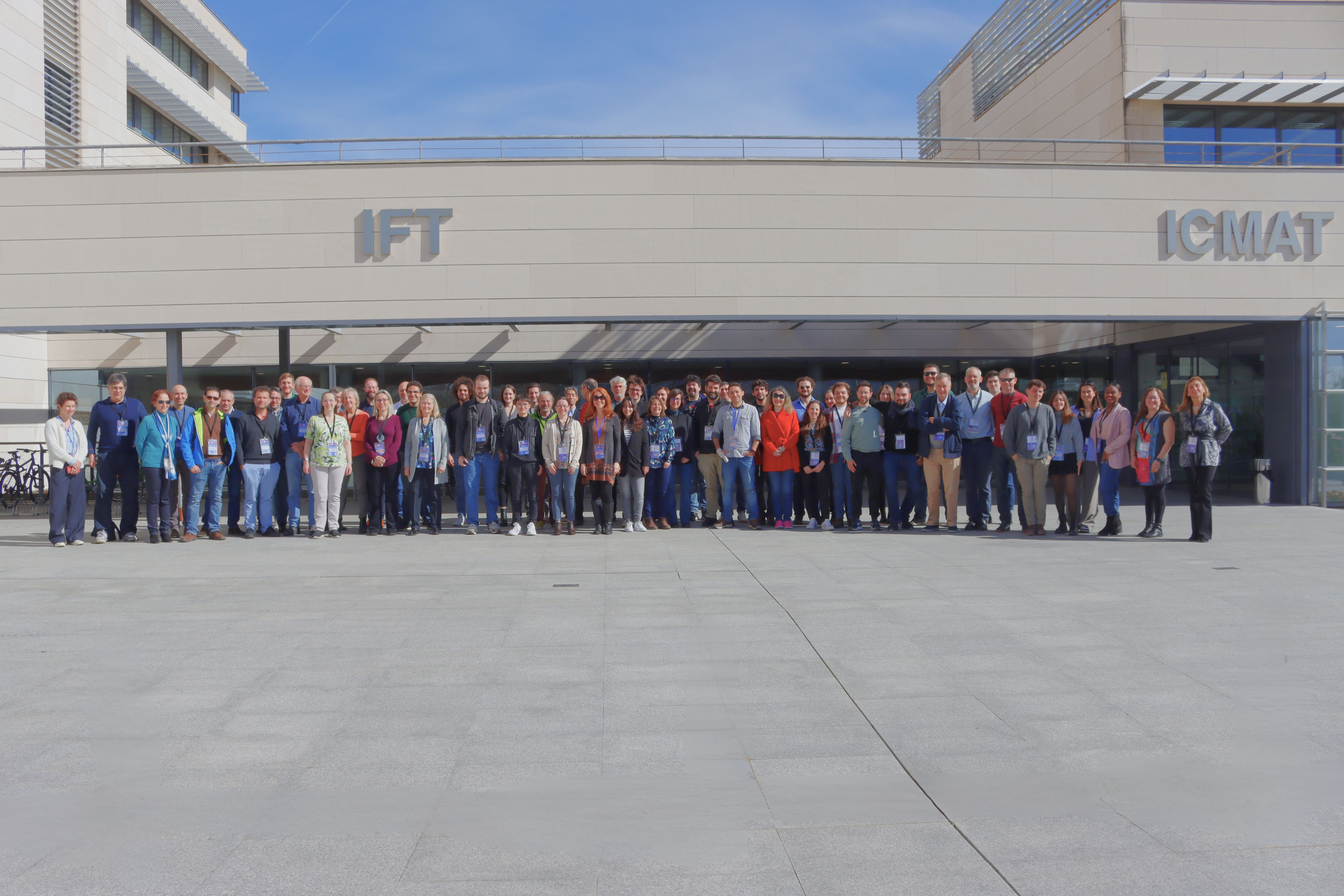Centro de Excelencia Severo Ochoa
Menu
Search

Blue Room
Spring internal meeting of the NASA Fermi Large Area Telescope Collaboration, closed to general public and only open to the ~400 Fermi-LAT members from all over the globe. First time the Collaboration will be meeting in Spain.
The Fermi-LAT collaboration, that operates the gamma-ray telescope aboard the Fermi satellite, from NASA, has chosen Madrid as the place where to hold their next biannual meeting. Precisely, the meeting will take place between March 11 and 15 at the Instituto de Física Teórica (IFT UAM-CSIC), joint research center belonging to the Consejo Superior de Investigaciones Científicas (CSIC) and the Universidad Autónoma de Madrid (UAM). This will be the first time that said collaboration meets at a Spanish institution.
Around 60 researches from all the continents are expected to participate, experts on different fields of high-energy and astroparticle physics, such as dark matter, supernovae, neutron stars or Galaxy evolution. It is to be highlighted that the current deputy (science) coordinator of the whole Fermi-LAT collaboration is the researcher Miguel A. Sánchez Conde, member of the IFT y professor at UAM.
Launched on June 11th, 2008, the Fermi satellite orbits the Earth every three hours, measuring with unprecedented accuracy the emissions from the Universe’s most extreme and energetic events, like supernova explosions, active galactic nuclei, or fast-rotating neutron stars.
After 15 years of operations, the Fermi gamma-ray telescope revolutionized our vision of the gamma-ray Universe, identifying thousands of sources of such radiation, shedding light into the origin and propagation of cosmic rays, as well as the nature of dark matter, and improving the study of astrophysical phenomena in combination with other “messengers”, including gravitational waves and neutrinos.
In this event, whose participation is limited to the members of the collaboration, the current state of the telescope and its future will be discussed, and the most significant and recent advances achieved by the scientists of the collaboration will be analyzed. Furthermore, there will be sessions dedicated to presenting new projects and to reporting on the state of ongoing studies within the framework of the collaboration.
The consolidation and development of new techniques and tools for the data analysis of the satellite will also be a key part of the program. All in all, this meeting will allow the international astroparticle community to continue its progression in both, the improvement of the current experimental results (for instance, reducing the uncertainties in the measurements and in the analyses of very high-energy emissions) and the understanding of the theory encoded in the data (e.g. about the nature of dark matter). On top of this, the meeting will address possible connexions with experiments operating at other energies or that detect other types of particles (for example, neutrinos) or astrophysical emissions (as gravitational waves).
References
[1] https://fermi.gsfc.nasa.gov/
[3] https://projects.ift.uam-csic.es/damasco/
The Fermi-LAT meeting in the Spanish media
El País Materia: Los astrofísicos que quieren desvelar el mayor misterio de nuestra galaxia
La Vanguardia: España acoge la primera reunión de la colaboración internacional Fermi-LAT de la NASA
EFE/Servimedia: España acoge la primera reunión de la colaboración internacional Fermi-LAT de la NASA
Social media